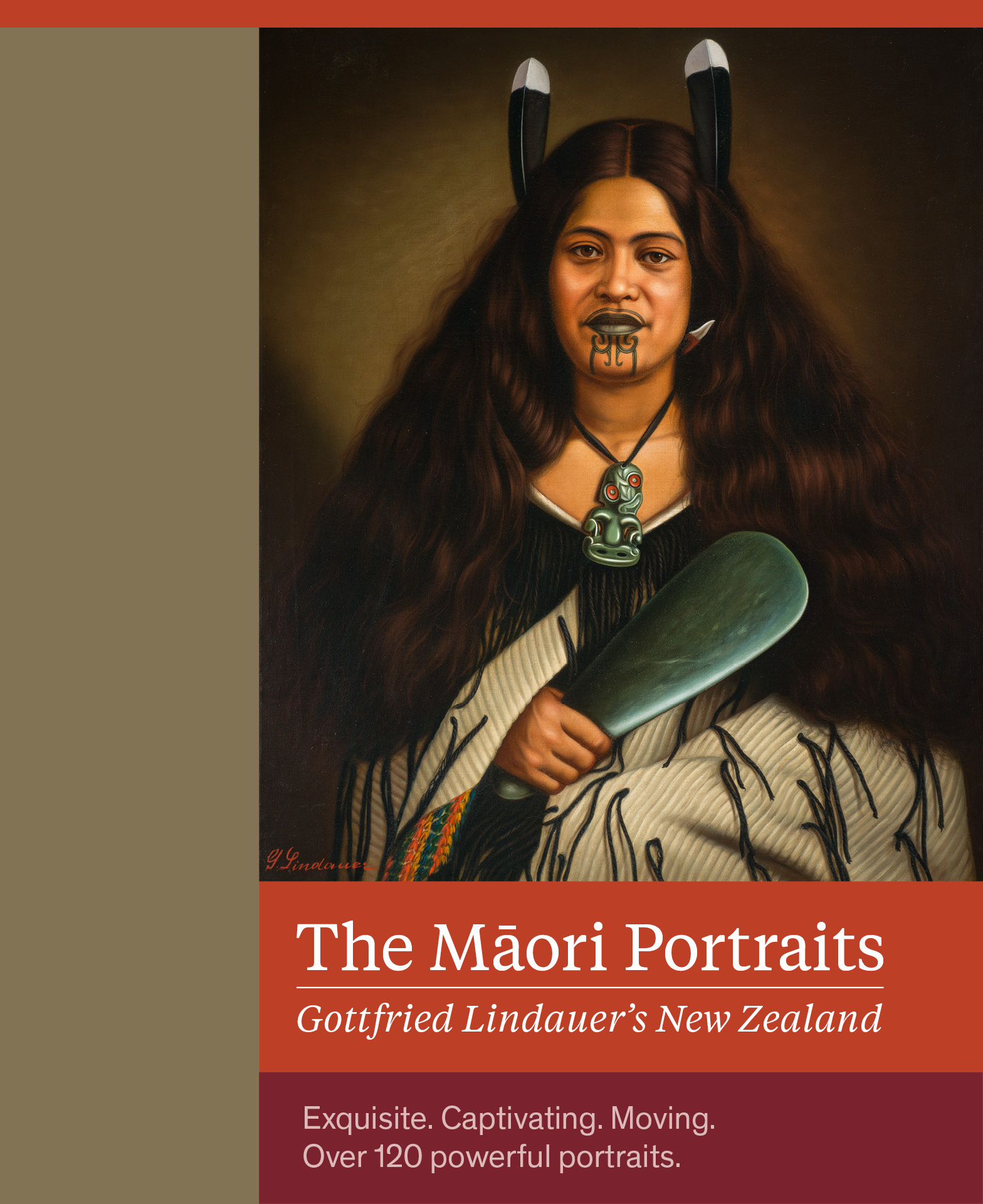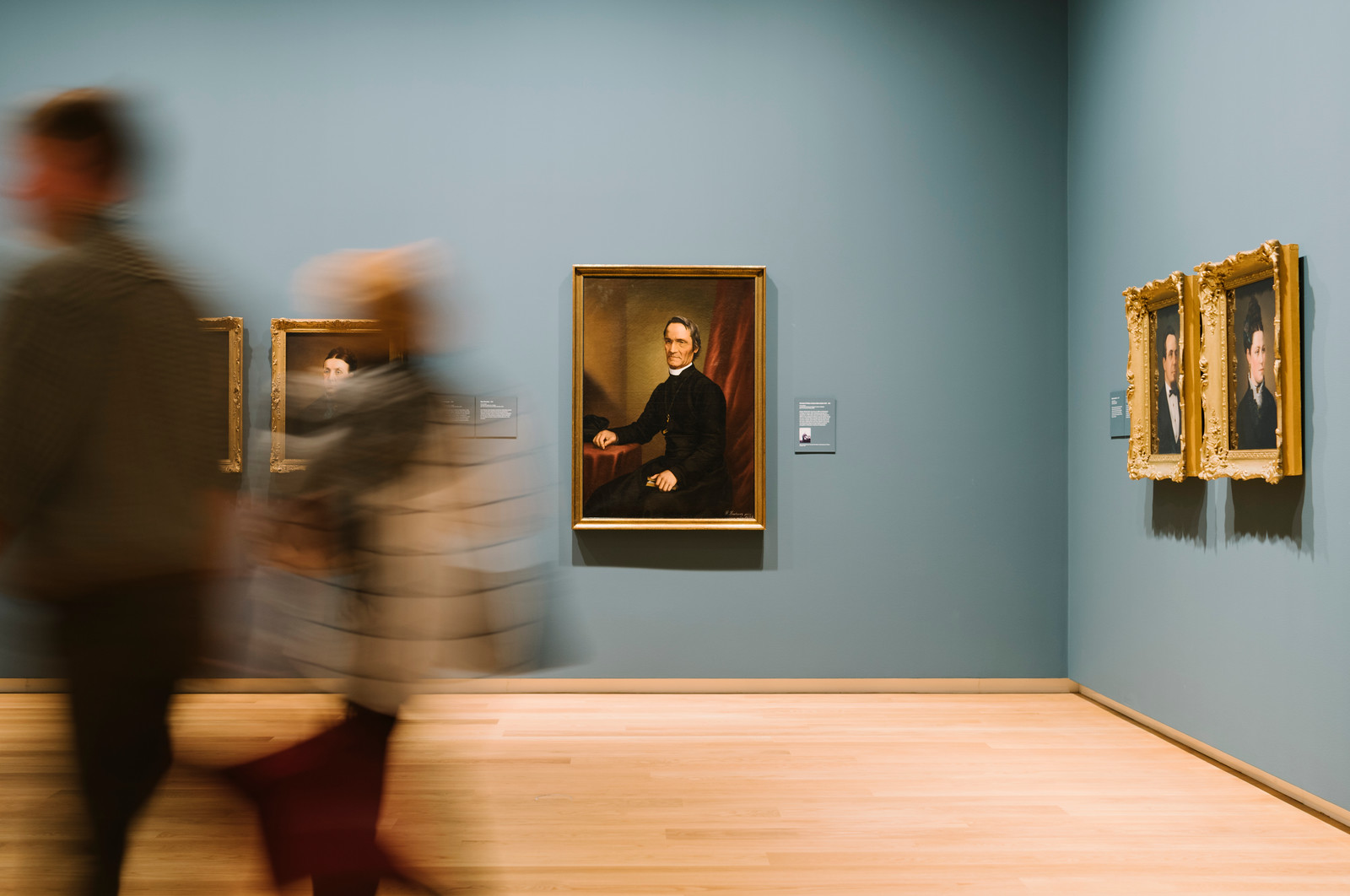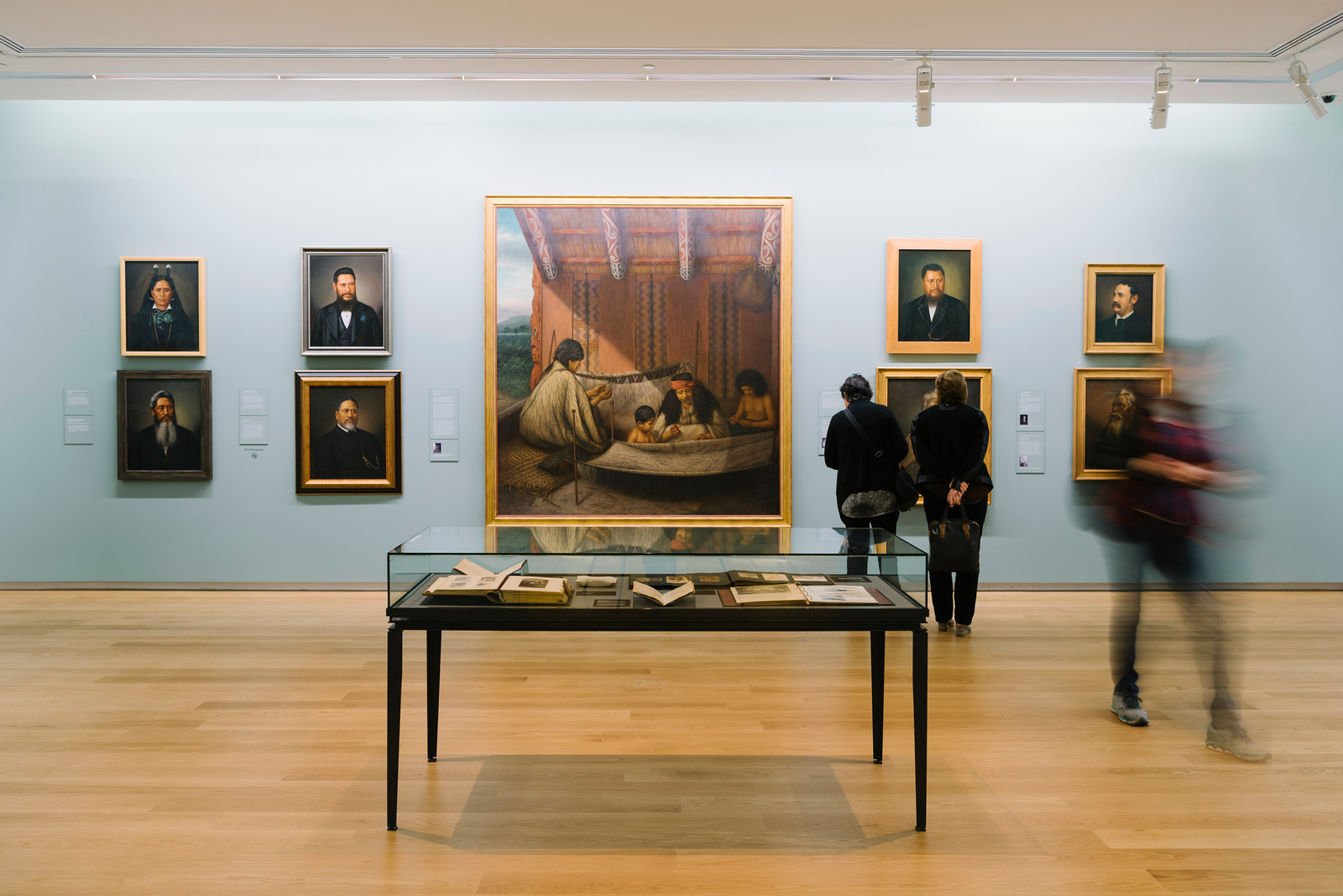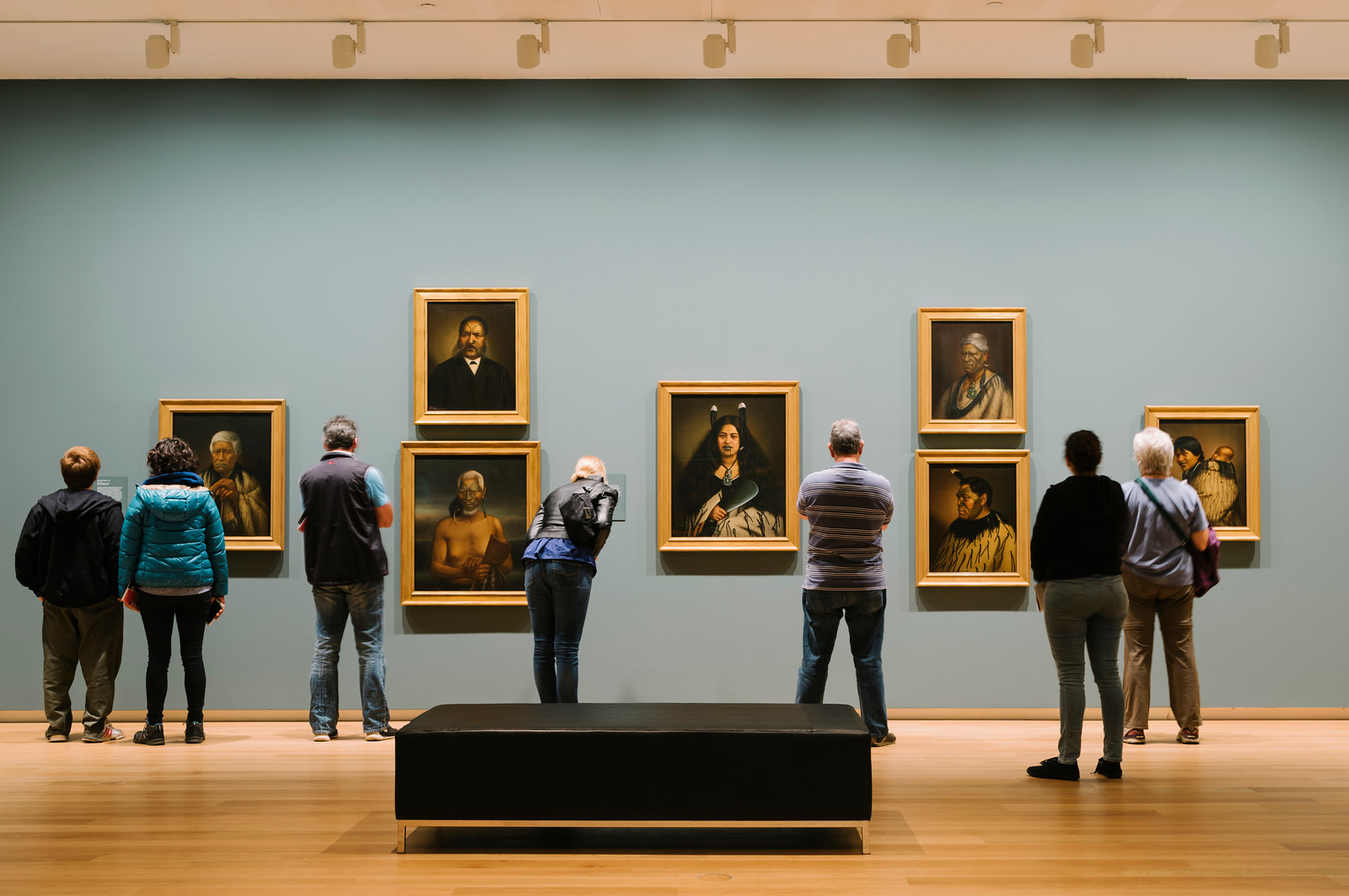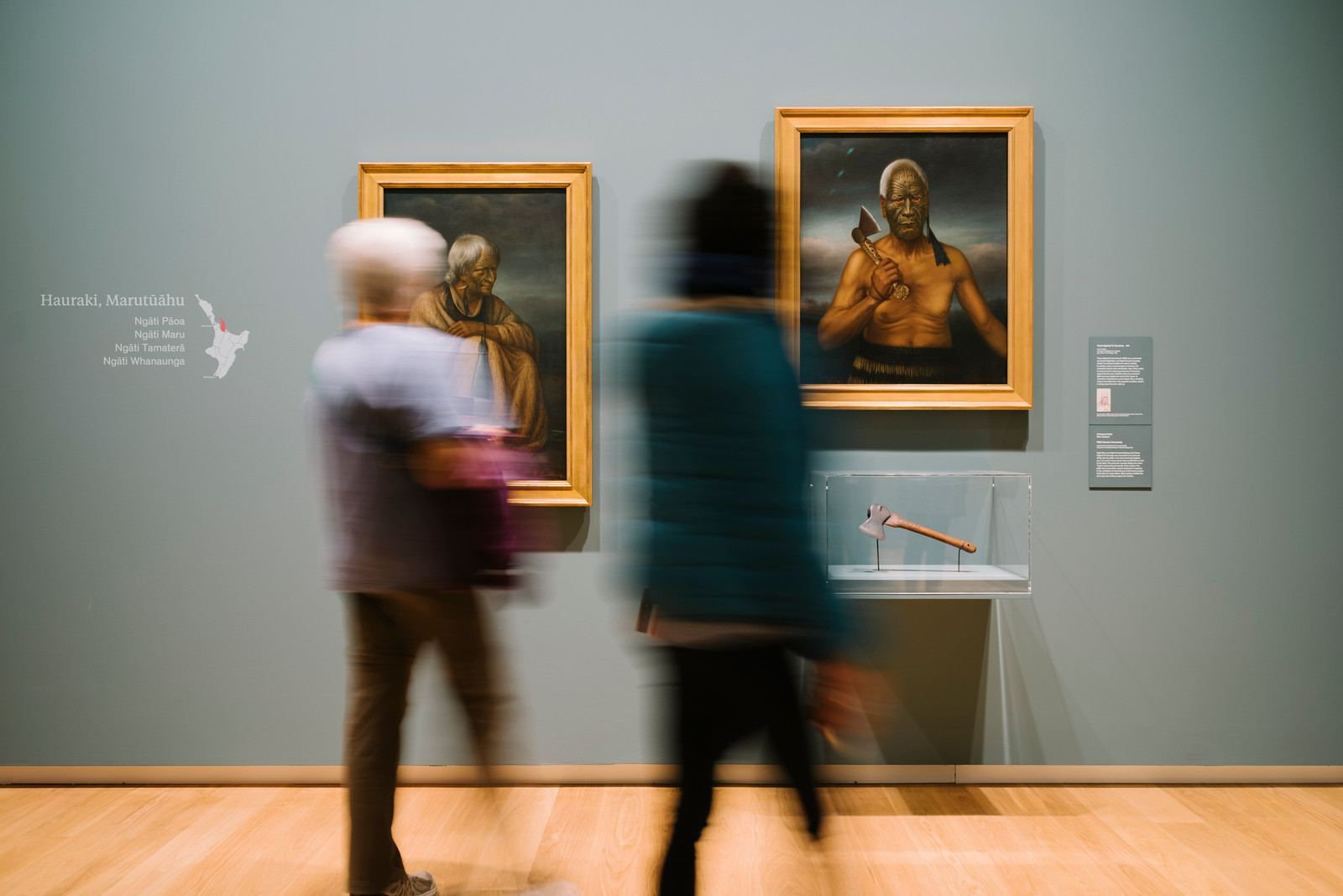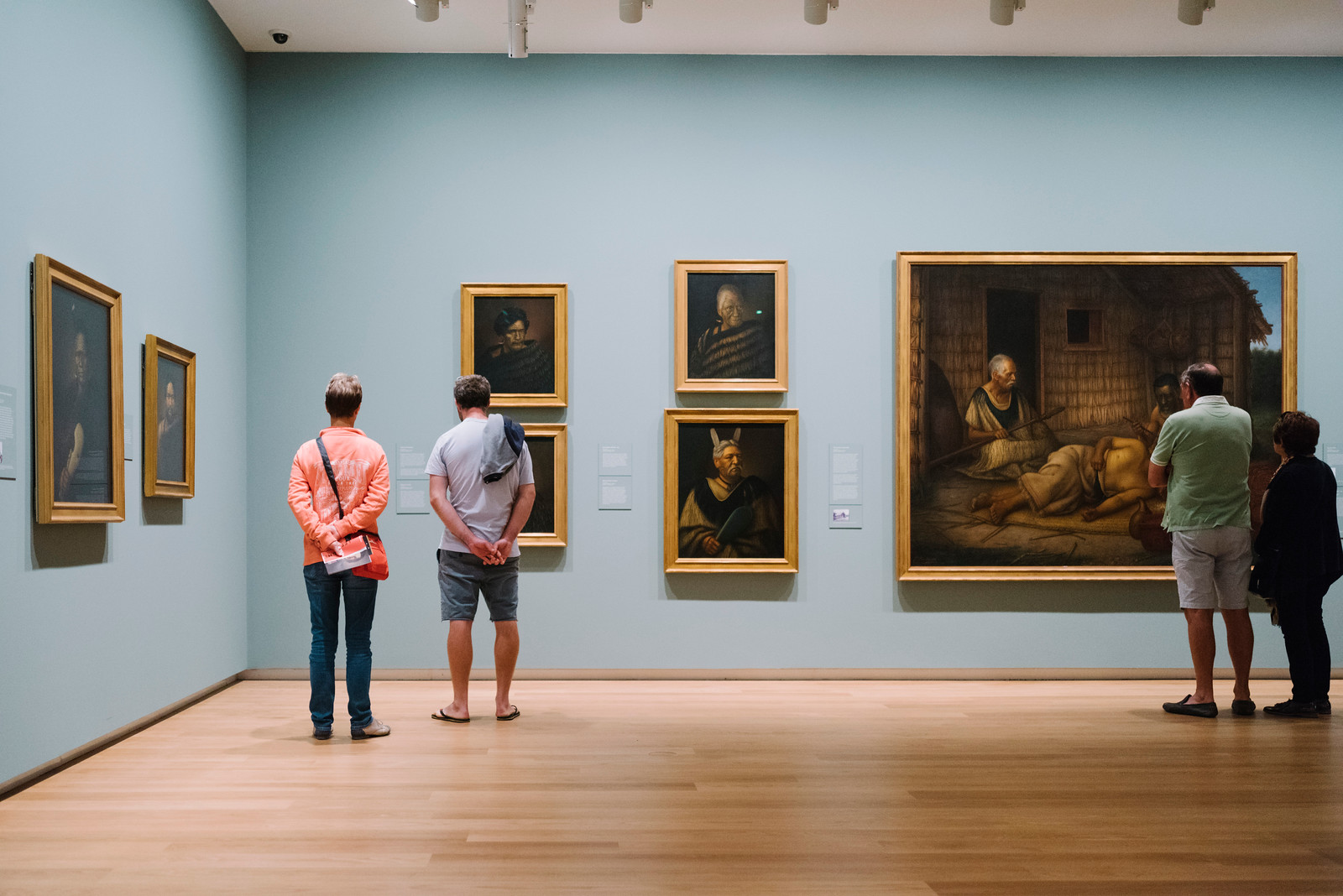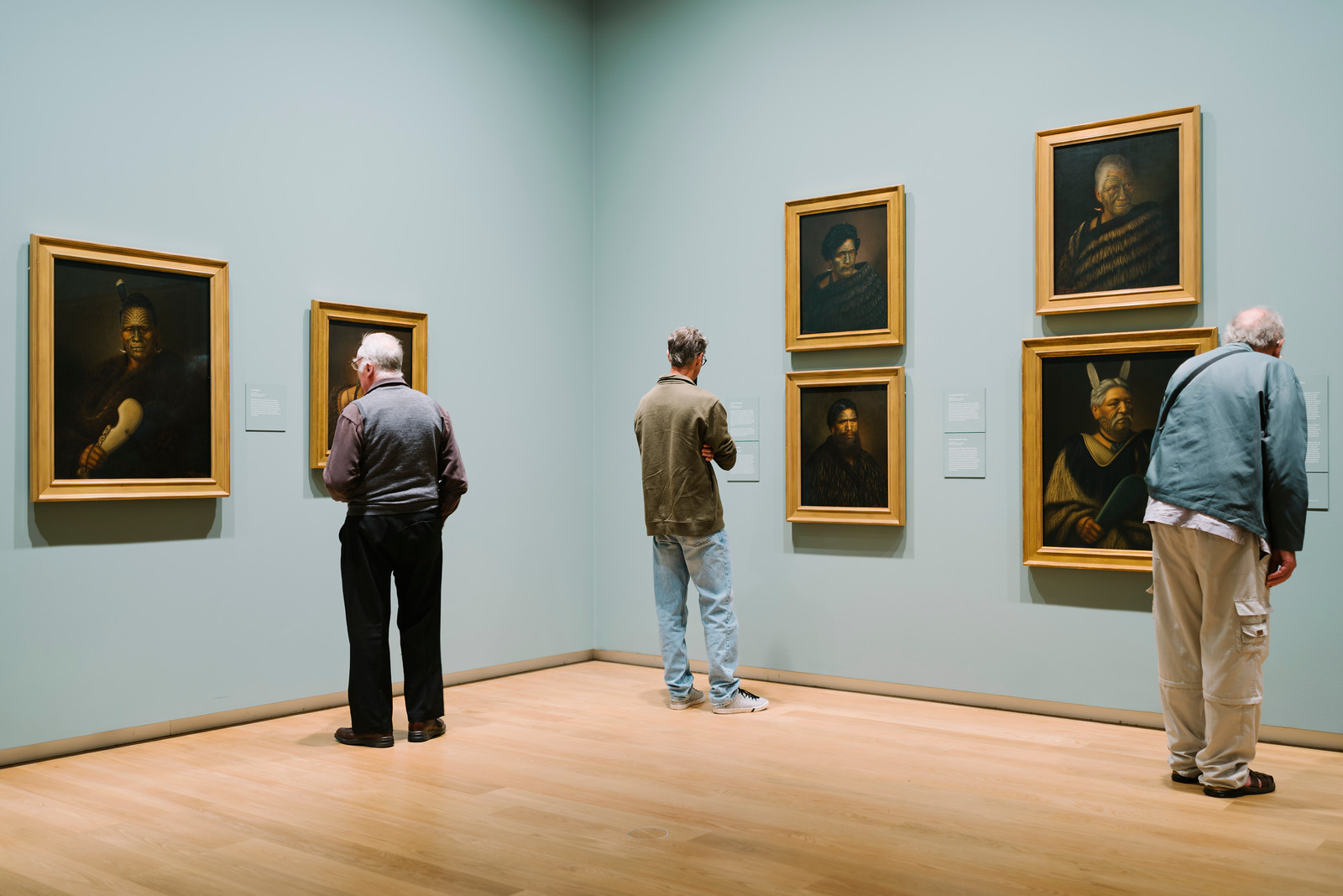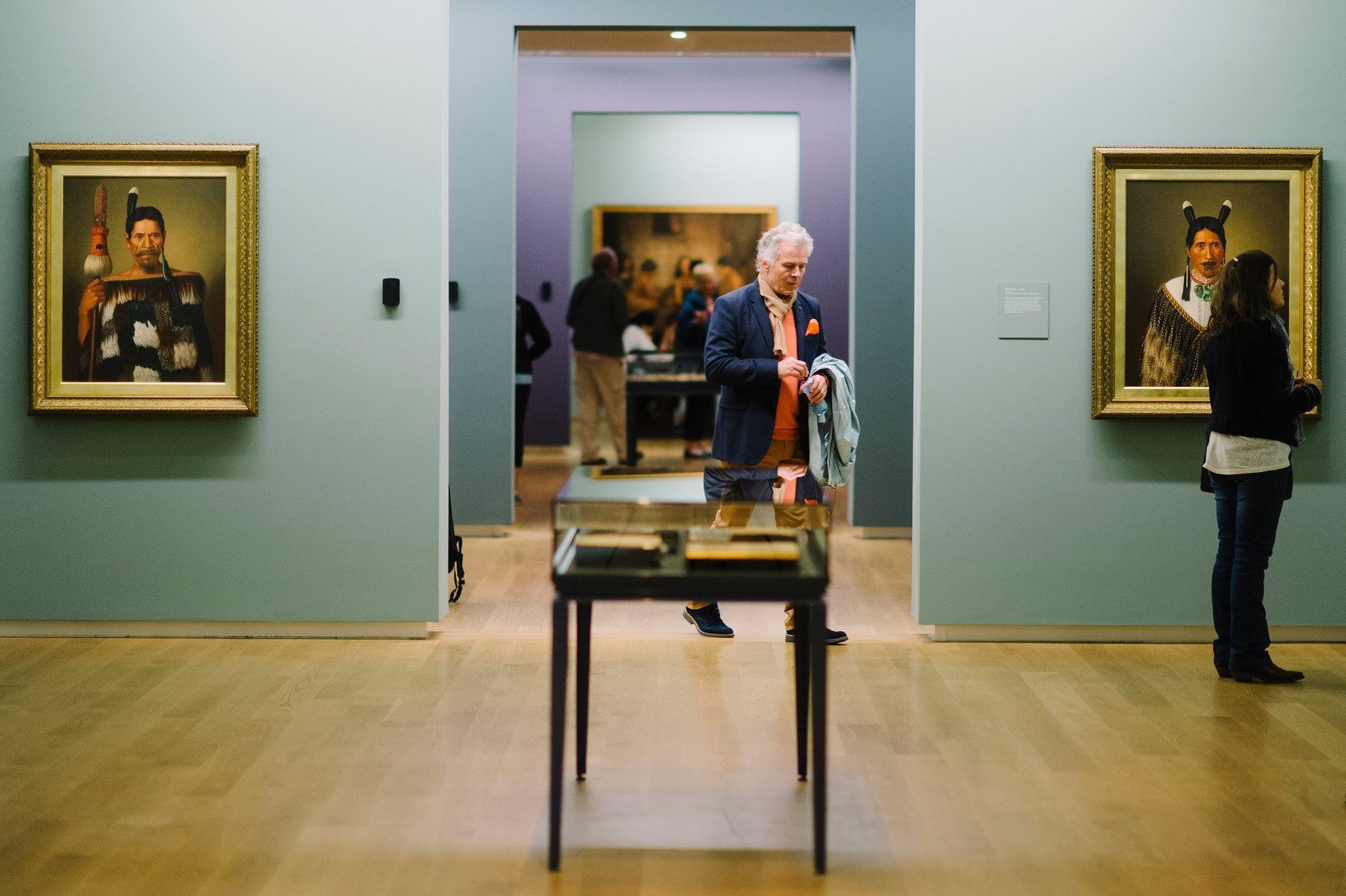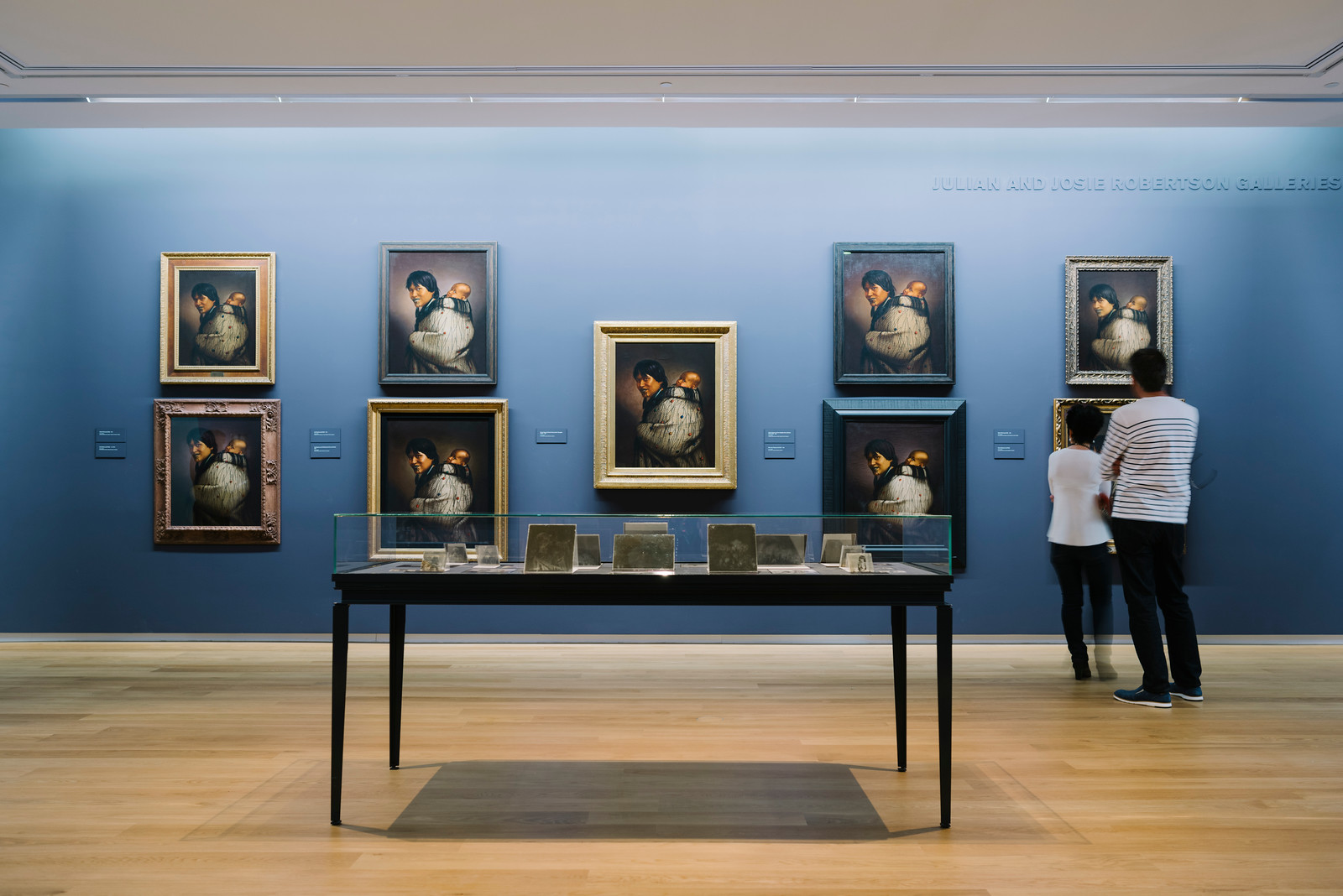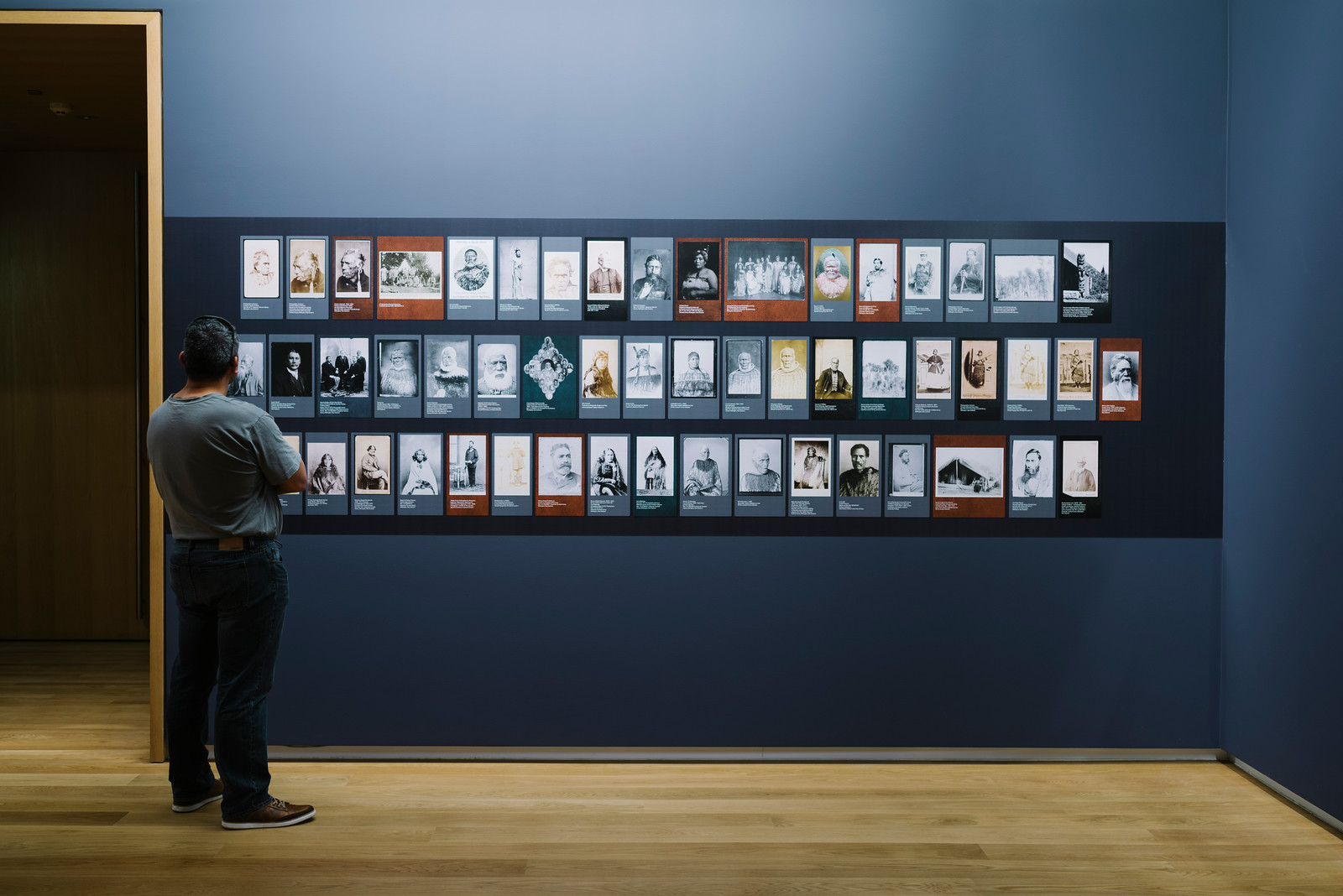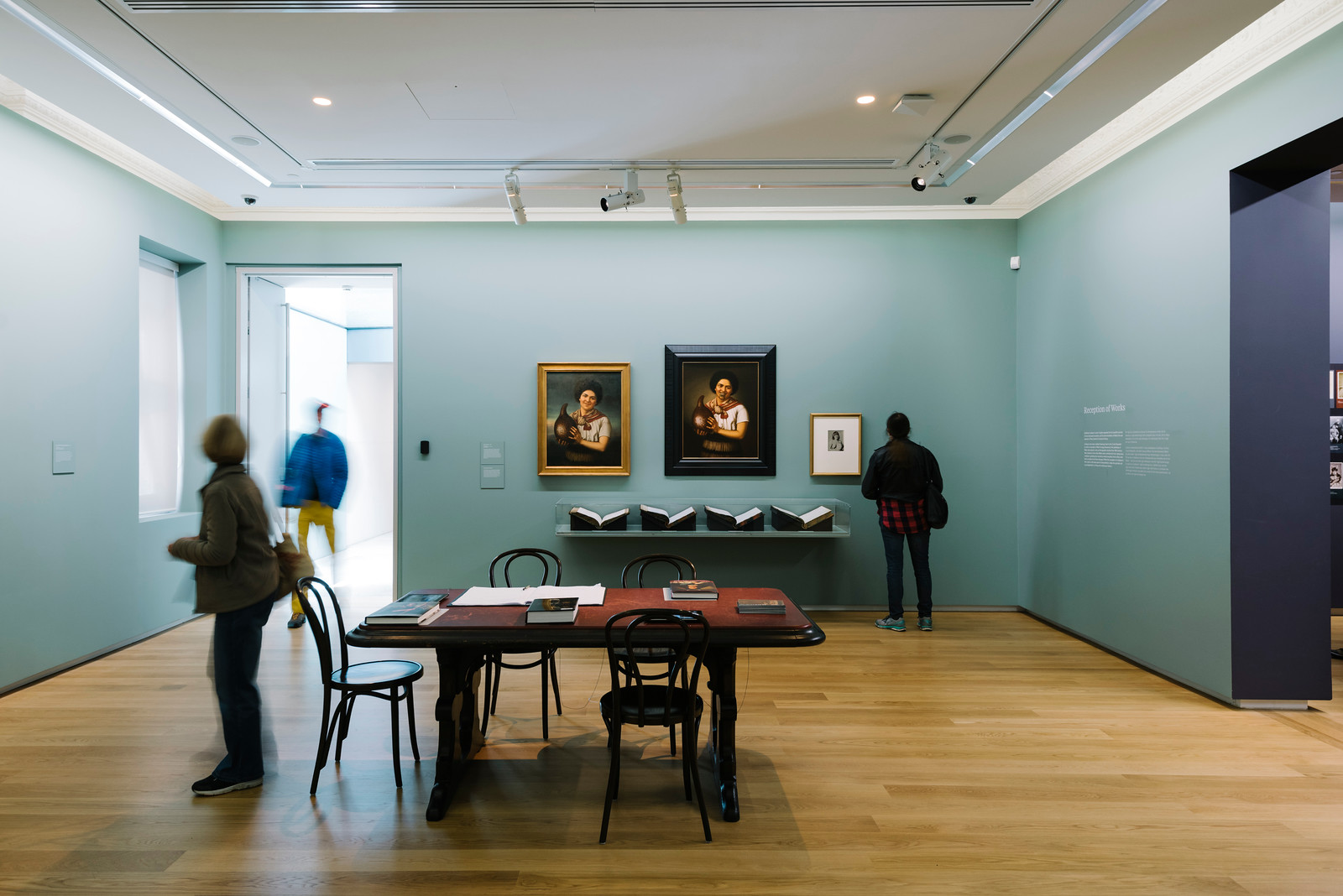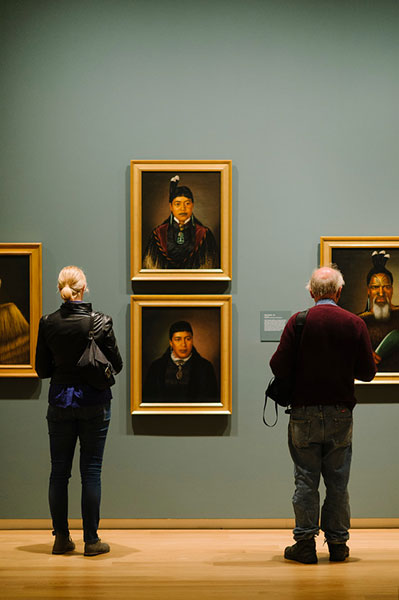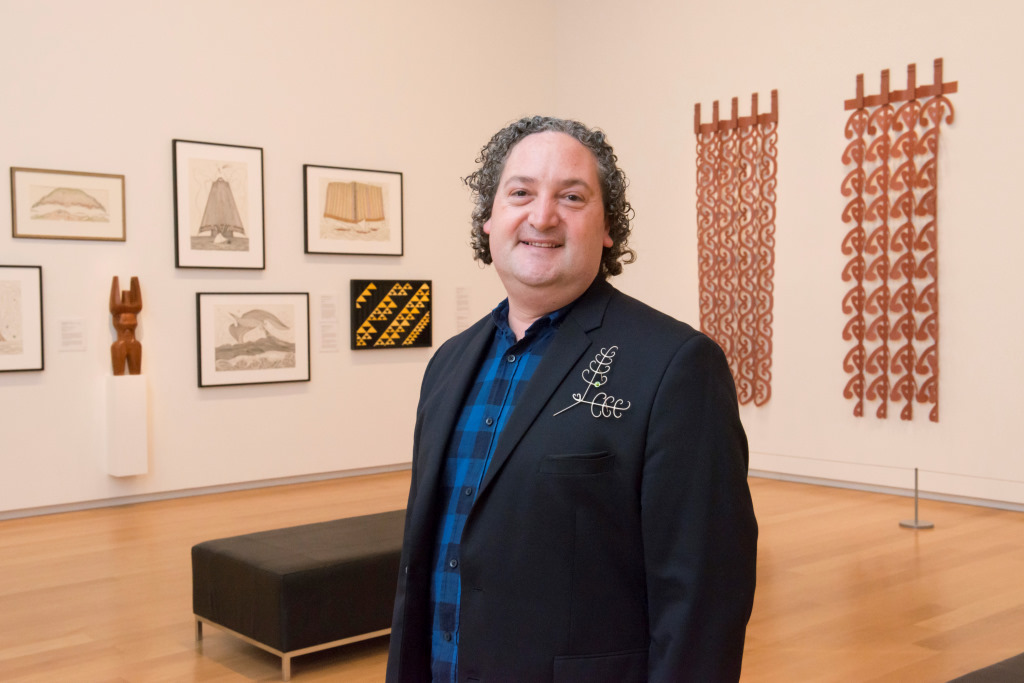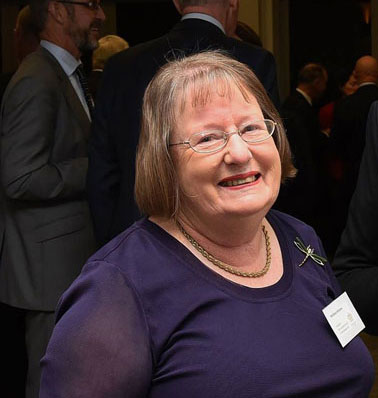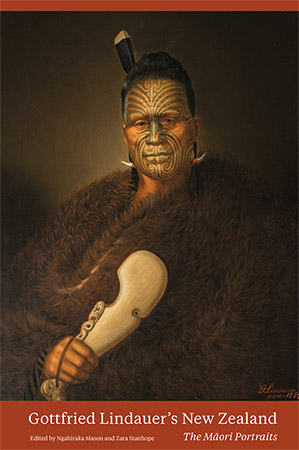Explore Aotearoa New Zealand’s rich history through more than 120 historical portraits of Māori and Pākehā by our most prolific professional colonial painter, Gottfried Lindauer.
Experience for yourself the power of Māori chiefs and leaders whose images are forever recorded in oil, and see how artist Gottfried Lindauer captured the practice of tā moko (facial tattoo). See up close ancestral figures painted in razor-sharp detail and view paintings depicting Māori life from the late 1800s to early 1900s New Zealand.
Through photographs, taonga (treasures) and keepsakes, discover Lindauer’s early art beginnings in Europe, as well as his life in New Zealand from his arrival in Wellington in 1874 until his death in Woodville in 1926. Learn about the artist’s early days in Bohemia, his artistic inventions in New Zealand, and the close relationships he built with patrons and those he photographed and painted. Discover how the artist contributed to the significance of portraiture in New Zealand and learn what his works mean for us today.
See, too, the fascinating exhibition-within-an-exhibition, Identifying Lindauer: His Materials and Techniques, which – curated by the Gallery's Principal Conservator Sarah Hillary – compares in molecular detail Lindauer’s paintings with a known forgery of his work.
The Māori Portraits: Gottfried Lindauer’s New Zealand is accompanied by a beautifully illustrated publication presenting new historical and cultural research completed specifically for this project.
Curated by Ngahiraka Mason and Nigel Borell
📷 Gottfried Lindauer, Pare Watene 1878
Auckland Art Gallery Toi o Tāmaki, gift of Mr H E Partridge, 1915

…his works remain, along with Goldie’s, the best known and most popular paintings of Māori.
Leonard Bell, art historian and writer
Events
Our extensive programme of special events is designed to complement your exhibition experience. Hear about the life and times of the Māori leaders depicted in Lindauer’s portraits direct from their descendants in person in our dedicated series of descendant floor talks. There are also daily tours, curatorial talks and ‘in conversation’ sessions that explore a range of related ideas from numerous cultural viewpoints. Make time for a return visit to see demonstrations in tā moko (Māori tattoo) and to join our weaving events.
Visit
Daily tours
We are offering tours of The Māori Portraits at 12.30pm and 2.30pm daily during the exhibition. Tours last 60 minutes, cost $10 and can only be booked at the information desk on level 1 on the day of your visit. Limited to 15 people per tour.
Groups
All education group visits to The Māori Portraits for 10 or more people should be booked at least two weeks in advance of your visit.
Tours will include an introduction to The Māori Portraits and a selection of artworks and ideas in the exhibition. The duration and nature of your tour can be agreed with our Education team when you book.
Booking is strongly recommended and booked groups will be prioritised. Large groups will be admitted into the exhibition in smaller groups.
To make a booking, email us with the details of your group, group size, and preferred date(s) and time(s) of visit. Payment can be made at the Gallery's front desk on the day of your visit.
Adult education group bookings
Adult education groups $10
Cost per person, for groups of 10 or more people. Bookings essential.
Early childhood, primary, secondary and tertiary education group bookings
For all education groups on a general visit to The Māori Portraits, we offer entry to the exhibition and the support of our Volunteer Guides for your group visit.
Early childhood groups FREE
Primary school groups FREE
Secondary school groups $5
Tertiary and ESOL groups $10
Adult helpers (per person) $10
Cost per person, for groups of 10 or more people. Bookings essential.
Facilitated education programmes
We offer regular facilitated programmes for schools, some of which focus on a specific work or works in the exhibition. For details of these programmes including Descendent tours, visit our Primary and Secondary pages and look out for references to The Māori Portraits.
Photography
You are welcome to take photographs for personal use except where a no photography icon is shown. In these instances, the lenders of the works have requested that no photographs be taken. We ask that you respect this and refrain from photographing these portraits.
Māori regard the images of tipuna (ancestors) as revered taonga (treasured items) because they carry the mana (prestige, esteem) of the person depicted. Many Māori trace direct connection to the individuals in these portraits and, in so doing, have living relationships as descendants which Auckland Art Gallery respects. We ask that you also respect this relationship and are mindful of the images you might take while viewing the exhibition.
You’re encouraged to use images from the exhibition as a way of remembering and sharing your experience with others, but the reproduction of portraits as commercial items or the use of the images in a way that would cause offence is strictly prohibited.
Pop-up shop
Before leaving the exhibition, check out our pop-up shop on the ground level. You will find biographical publications, prints and T-shirts. Along with an array of woven flax kete, you'll find contemporary Māori art pieces from some of this country’s most talented makers in ceramics, jewellery and body adornment objects.
Extras
Body adornment in Lindauer’s Māori portraits
Māori have always communicated a sense of cultural position and shown personal expression through body adornment practices. The portraits by Gottfried Lindauer are a stunning reminder of this rich history in Aotearoa New Zealand.
The painter’s portraits of Māori leaders and revered rangatira (chiefs) offer a rich record of the status and importance of people in Māori society – both then and now. The esteem of those depicted is also conveyed through the objects they hold and the items that adorn the body.
Tā moko or body tattooing is the pre-eminent adornment practice of Māori people. As we see in many of Lindauer’s Māori portraits, and in the large painted scene work The Tohunga-ta-moko at Work, the practice of tā moko is the most visible and most esteemed statement of a person’s status and mana (authority).
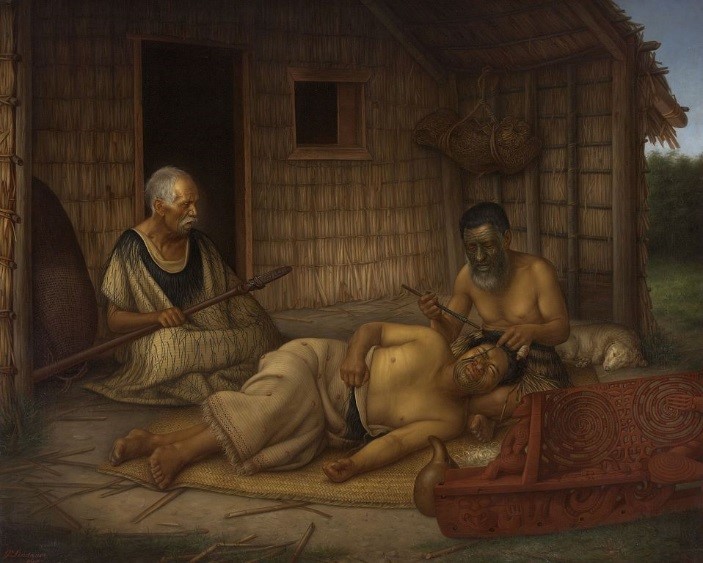
The Tohunga-ta-moko at Work
Auckland Art Gallery Toi o Tāmaki
gift of Mr H E Partridge, 1915
Tā moko is a visual narrative that tells of the recipient’s lineage and status, their personal accomplishments and social standing – information that crucially identifies the person’s place among others in society. Each area of the face – from the chin to the lower cheeks, from the forehead to the nose – carried a particular statement about that person.
Look out for several rangi paruhi (full-face tattoos) and moko kauae (female chin and lip tattoo) in Lindauer’s portraits.

Retimana Te Mania 1895
Auckland Art Gallery Toi o Tāmaki
gift of Mr H E Partridge, 1915
Several of the sitters have kākahu (woven cloaks) draped around their shoulders. Keep an eye out for the following cloak variations in Lindauer’s portraits:
Korowai (plain gold muka cloak with black tassels)
The korowai cloak is the most prominently depicted cloak in Lindauer’s Maori portraits. It is identifiable by plain gold muka fibre body of the cloak which is contrasted by black paru (black earth dye) tassels that cover the surface.

Wi Te Manewha 1882
Auckland Art Gallery Toi o Tāmaki
gift of Mr H E Partridge, 1915
Kahu kuri
The kahu kuri (dog skin cloak) is the definitive cloak of a warrior and at the time of Captain James Cook’s first visit, it was considered the most prestigious of all cloaks. The kahu kuri is created by weaving a muka fibre base, and then the dog skin strips are woven into position and arranged into patterns.
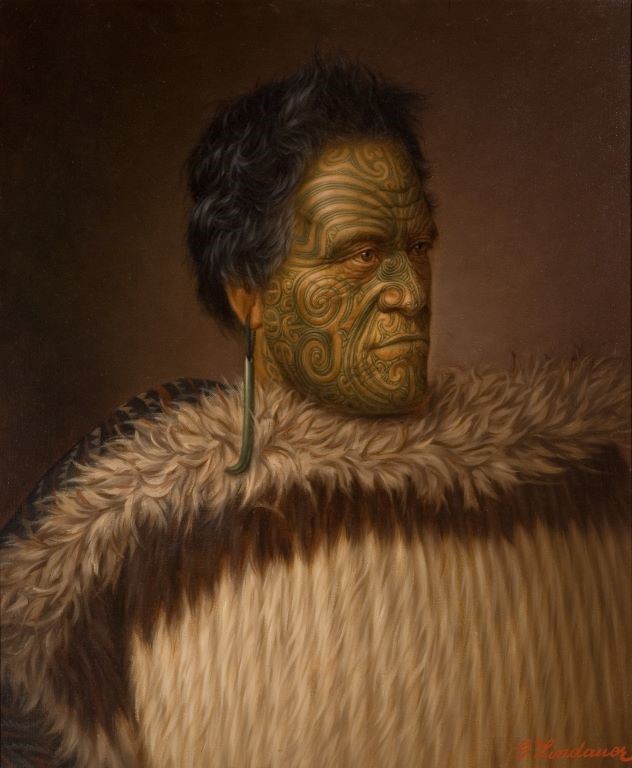
Tomika Te Mutu
Auckland Art Gallery Toi o Tāmaki
gift of Mr H E Partridge, 1915
Kahu kiwi
The prized kahu kiwi (kiwi-feather cloak) is an illustrious statement of wealth, power and mana (authority). It is only worn by those of high rank and lineage.
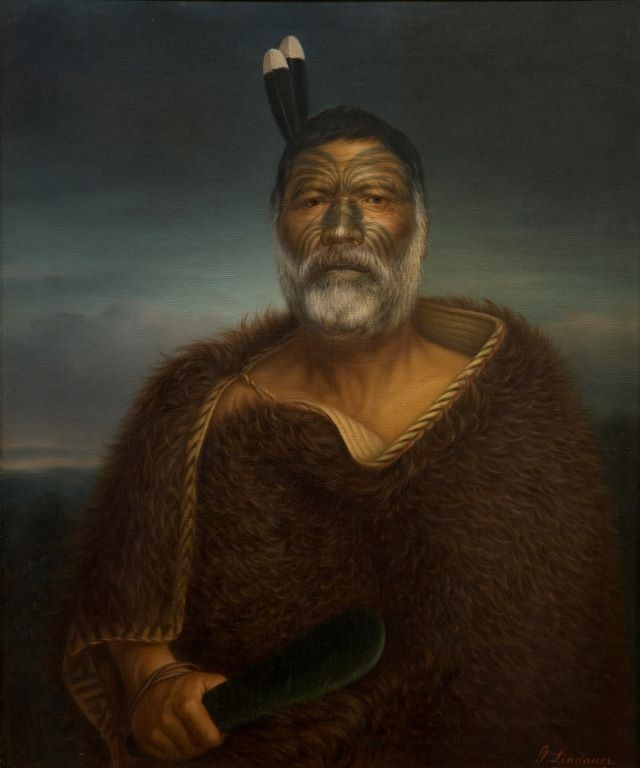
Eru Tamaikoha Te Ariari 1903
Auckland Art Gallery Toi o Tāmaki
gift of Mr H E Partridge, 1915
Placed in the hair, feathers from the now extinct native huia bird signified a person’s chiefly status or rank. The white tips of the huia feather identified it as unique and auspicious.
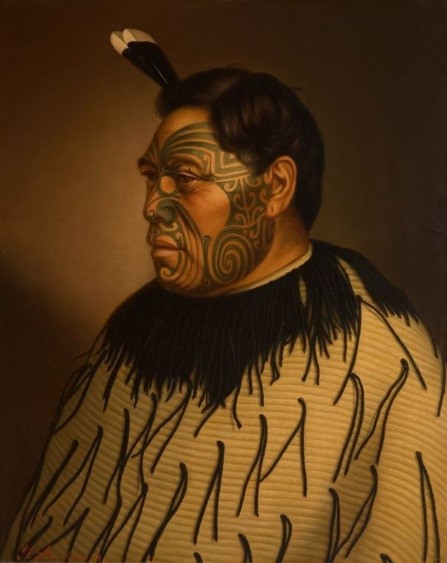
Tamati Waka Te Puhi 1878
Auckland Art Gallery Toi o Tāmaki
gift of Mr H E Partridge, 1915
The mere pounamu was the most prized of all handheld weapons due to the scarcity and durability of the stone; it was the ultimate statement of a rangatira (chief).

Wahanui Reihana Te Huatare
Auckland Art Gallery Toi o Tāmaki
gift of Mr H E Partridge, 1915
Usually made of pounamu (greenstone), hei tiki are pendants worn around the neck and take a human form. In the portrait of Pare Watene the hei tiki symbolises fertility and whakapapa (lineage).
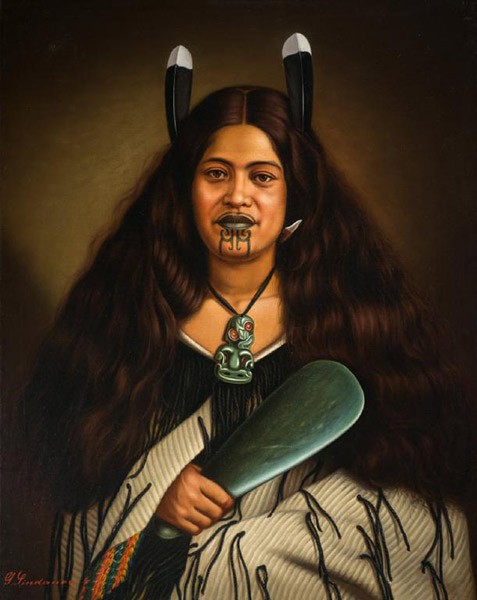
Pare Watene 1878
Auckland Art Gallery Toi o Tāmaki
gift of Mr H E Partridge, 1915
Worn as an adornment lashed from the ear, mako were a highly valued and cherished items. Māori associated the shark with ferocity and strength and hence they were often worn by warriors to signify strength, fortitude and resilience.
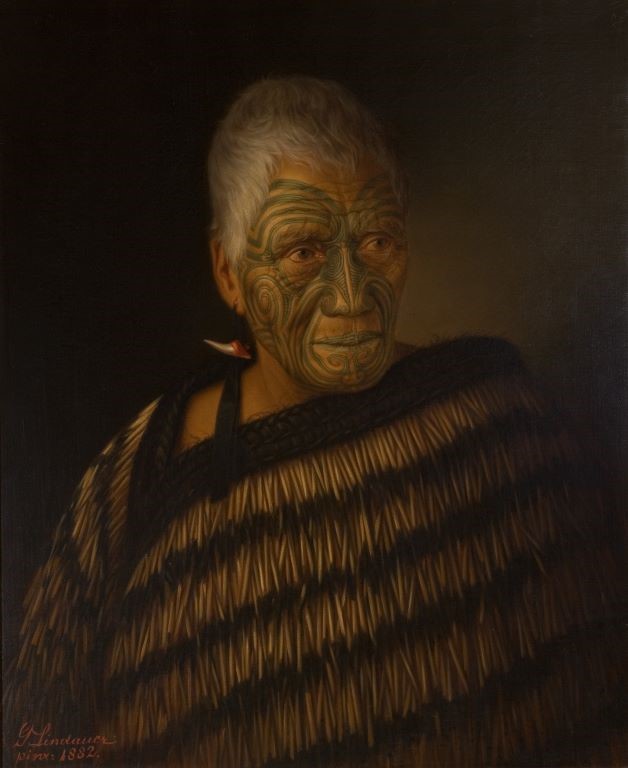
Tamati Ngapora Manuhiri 1882
Auckland Art Gallery Toi o Tāmaki
gift of Mr H E Partridge, 1915
Useful words in te reo Māori
Find below a selection of useful words in te reo Māori that you may encounter in the exhibition. For these and more visit NZHistory. Māori Dictionary is another great online resource.
Hui – meeting, conference, gathering
Haka – chant with dance for the purpose of challenge
Waiata – song or chant which follows a speech
Koha – gift, present (usually money, can be food or precious items, given by guest to hosts)
Wharenui – meeting house
Mana – authority, power; secondary meaning: reputation, influence
Manaakitanga – respect for hosts or kindness to guests, to entertain, to look after
Tapu – sacred, not to be touched, to be avoided because sacred, taboo
Taonga – treasured possession or cultural item, anything precious
Tūrangawaewae – a place to stand, a place to belong to, a seat or location of identity
Marae – the area for formal discourse in front of a meeting house; or the whole marae complex, including meeting house, dining hall, forecourt, etc.
Tangata whenua – original people belonging to a place, local people, hosts
Whakapapa – genealogy
Whenua – land, homeland, country
Hapū – a clan, tribe, independent section of a people (modern usage – sub-tribe)
Iwi – people, nation (modern usage – tribe); bones
Kaumātua – elder or elders, senior people in a kin group
Tīpuna – ancestor
Pākehā – people living in New Zealand of British/European descent
Rangatira – person of chiefly rank, boss, owner
Waka – canoe, canoe group
Whānau – extended or non-nuclear family; to be born
Karakia – say grace, pray, recite a prayer, chant
Tā moko – to tattoo, apply traditional tattoo
Pounamu – a variety of jade; greenstone
Heitiki – greenstone pendant for the neck, usually of a human image
Whakamīharo Lindauer Online
Launched in June 2010, the Lindauer Online project and website was intended to benefit all generations of New Zealanders and to actively educate and respond to the growing global interest in Lindauer and things Māori.
Behind the Brush
On the occasion of the exhibition Māori Television are rescreening series one and two of Behind the Brush, which brings alive the stories of descendants and uncovers the lives of the artist, patron Henry Partridge and tīpuna Māori.
The series screens 8pm Wednesdays from 26 October and on demand.
FAQs
The Māori Portraits is on show at Auckland Art Gallery from Saturday 22 October 2016 – Sunday 19 February 2017. The exhibition is open during normal Gallery hours, 10am–5pm. Entry is free.
The Māori Portraits is located on the first level of the Gallery. You can view and download a map of the Gallery here.
No. Entry to the exhibition is free.
Yes. Bookings for education groups (including adult education groups) of 10 or more people should be made by emailing education@aucklandartgallery.com with the details of your group, group size and preferred date(s) and time(s) of visit.
Booked groups will be prioritised.
We recommend allowing 60–90 minutes to view
The Māori Portraits.
Yes, you are welcome to join one of our paid daily tours of the exhibition. Tours begin at 12.30pm, last approximately 60 minutes and cost $10 per person. Tours can only be booked at the information desk on level 1 on the day of your visit.
Unless you are part of one of these tours, with a booked group or visiting with a school, The Māori Portraits is a self-guided exhibition. However, we provide you with a free visitor guide to help you get the most from your visit.
The Gallery’s free tours at 11.30am and 1.30pm daily will include collection and building information, but will not visit this exhibition.
Tours of The Māori Portraits will take place at 12.30pm daily (except Christmas Day). These will be approximately 45-minutes long and will cost $10. Tours can only be booked at the information desk on level 1 on the day of your visit.
Yes, The Māori Portraits is accompanied by an extensive visitor programme of special events. See What’s on for details. You can also subscribe to our fortnightly enewsletter to receive the latest information on upcoming events straight to your in-box – sign up at the bottom of any page on our website.
The Gallery is busiest on weekends – if you can only come during the weekend, earlier is best (10am–12pm). If you’re visiting during the week, afternoons are generally quieter (2–5pm).
Yes, Gottfried Lindauer’s New Zealand: The Māori Portraits will be available for purchase in our shop on the ground level for $75. This major publication presents 67 portraits and 8 genre paintings alongside detailed accounts of the subject and work, followed by essays by leading scholars that take us inside Lindauer’s world.
Yes. Members receive 10% off the publication, Gottfried Lindauer’s New Zealand. You will also receive 10% off purchases from the Gallery’s shop, including our special exhibition pop-up shop. Visit the Members page for the full list of benefits.
Yes, you are welcome to take photographs for personal use except where a no photography icon is shown. In these instances, the lenders of the works have requested that no photographs be taken. We ask that you respect this and refrain from photographing these portraits.
Māori regard the images of tipuna (ancestors) as revered taonga (treasured items) because they carry the mana (prestige, esteem) of the person depicted. Many Māori trace direct connection to the individuals in these portraits and, in so doing, have living relationships as descendants which Auckland Art Gallery respects. We ask that you also respect this relationship and are mindful of the images you might take while viewing the exhibition.
You’re encouraged to use images from the exhibition as a way of remembering and sharing your experience with others, but the reproduction of portraits as commercial items or the use of the images in a way that would cause offence is strictly prohibited.
Please note that tripods and flash photography are not permitted.
View the Gallery's full photography policy
No. The Māori Portraits is a different and much larger exhibition, including more than 120 portraits, eight genre paintings, photography and archive material.
The Māori Portraits: Gottfried Lindauer’s New Zealand has been developed by Auckland Art Gallery Toi o Tāmaki and is currently not planned to tour.
